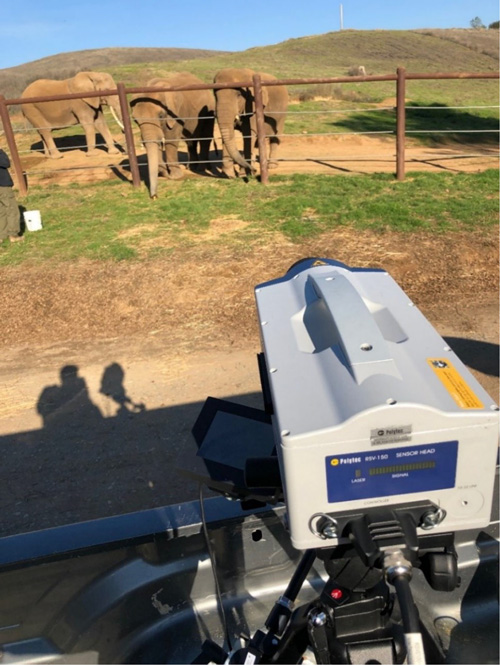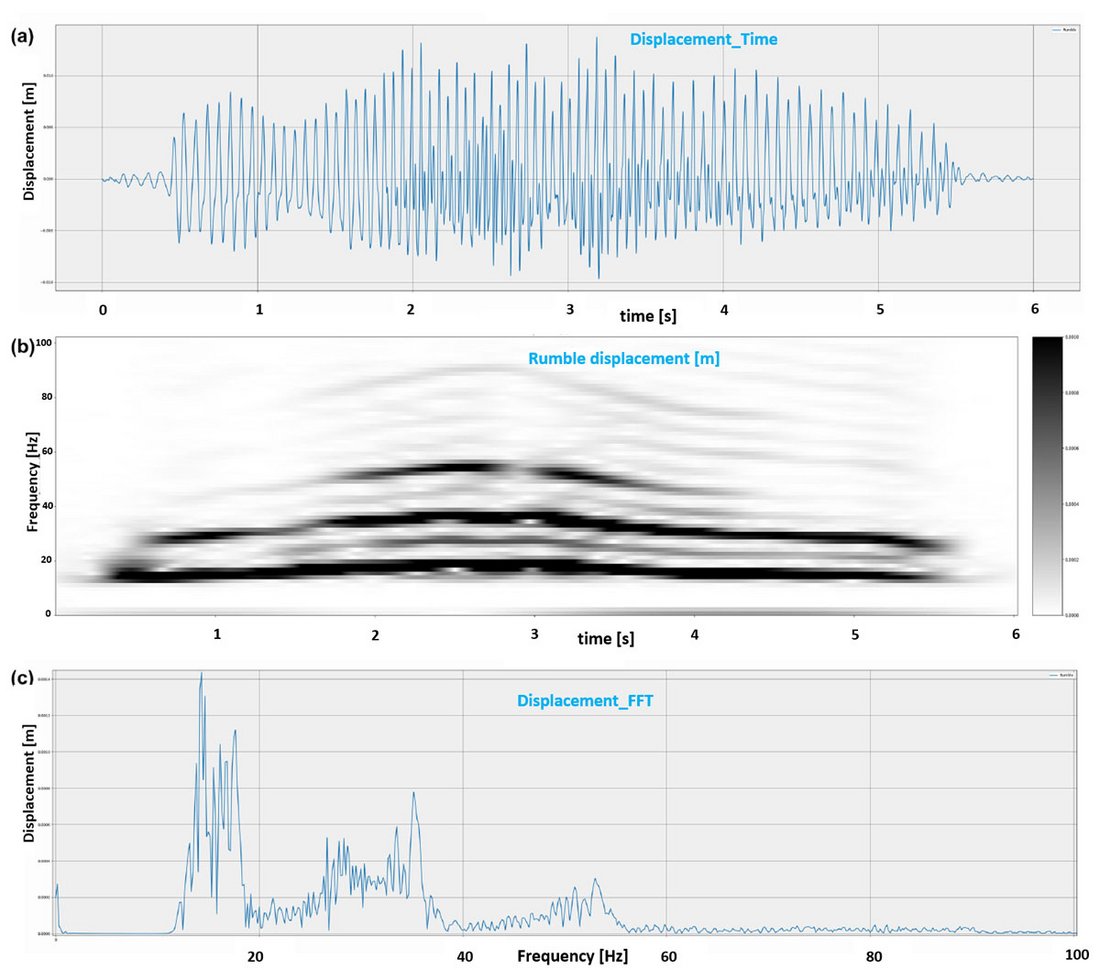
Proof of concept for the use of laser Doppler vibrometry in identifying individual callers within African elephant vocalization bouts
A recent study1 published in the European Physical Journal Special Topics introduces a pioneering application of laser Doppler vibrometry (LDV) to better comprehend African elephant vocalizations and their behavioral implications. The research primarily aimed to determine the dynamics of vocal exchanges within elephant groups, with a particular focus on a specific vocalization known as the "let's go" rumble. These rumble sequences play a crucial role in coordinating the movement of elephant groups, spatial relationships, and reinforcing social bonds.

Experimental methodology
The researchers conducted their study on a group of captive African elephants within a spacious, open field setting. Their unique approach involved utilizing LDV technology, a non-invasive technique used to remotely measure the velocity of surface vibrations without direct physical contact.
This technology is widely recognized for its applications in diverse fields such as engineering, biomedical research, and animal communication studies. LDV's exceptional capability to capture vibrations, particularly in the infrasound range (below the range of human hearing), makes it an ideal tool for studying low-frequency elephant vocalizations.
In the context of this research, a specific elephant within the group was targeted for LDV monitoring. The LDV non-contact vibration measurement instrument was set up to focus on this individual. When this elephant emitted a rumble vocalization, the LDV technology precisely detected the vibrations and recorded the vocalization in detail. This approach allowed the researchers to capture data with unprecedented precision, offering insights into the acoustic characteristics of these vocalizations.
Acoustic characteristics of elephant rumbles
The recorded data revealed important structural parameters of the rumble vocalization. For instance, a typical rumble was found to last approximately 5 seconds, exhibiting a fundamental frequency of 17-20 Hz, and displaying two distinct harmonics at around 40 and 60 Hz (Figure 2). These detailed measurements help characterize and distinguish between individual vocalizations, which could potentially provide insights into the emotional and physiological state of the elephants at the time of vocalization.

The "let's go" rumble, which was a central focus of this study, is a unique and highly relevant vocalization in elephant society. It is primarily associated with the initiation of group movements. The LDV recordings showed that the "let's go" rumble is characterized by a more extended duration, generally exceeding 10 seconds, and a distinctive pattern of low-frequency infrasound modulation. Understanding the characteristics of this vocalization is pivotal in unraveling how elephants coordinate their group movements and decide on collective actions.
Behavioral implications
The research's findings have significant implications for our understanding of elephant behavior and communication. The LDV technology, as demonstrated in this study, offers numerous implications for the field of elephant bioacoustics and behavioral ecology.
One of the key findings is the ability to reliably identify the caller within vocalization bouts. This is instrumental in understanding the dynamics of vocal exchanges within elephant groups and potentially identifying leadership roles within these societies. Elephant societies are complex, and leadership plays a significant role in their coordination and decision-making processes. LDV can shed light on these intricate dynamics, potentially helping researchers identify the social structure and hierarchies within elephant groups.
Furthermore, the technology has practical advantages over traditional methods for studying animal vocalizations. Voice-activated collars, for instance, have been used to monitor individual animals' vocalizations. However, these systems can be costly, challenging to deploy in the field, and may lead to disturbances in the animals' natural behavior. LDV, on the other hand, is non-invasive, remote, and can be used in field studies to record vocalizations of known individuals within family groups, even in the wild, without interfering with their natural behavior.
Applications and future research
In conclusion, this study marks a significant milestone in the application of LDV technology to advance our understanding of elephant vocal communication. The capability to identify individual callers within vocalization sequences and record their vocalizations with high precision opens up new avenues for research in animal behavior. This research's potential applications are far-reaching.
Understanding the role of vocalizations in coordinating group movements and actions among elephants may have implications for their conservation and management. In the wild, it could aid in the tracking and protection of elephant herds, providing insights into their social interactions and facilitating the mitigation of human-elephant conflicts.
The technology's non-invasive nature makes it a valuable tool for future studies on a wide range of animals. Identifying callers within a group can be a formidable challenge, but LDV offers a promising solution. Researchers studying other species with complex social structures and communication systems could adapt this technology to their work.
In summary, the integration of LDV into the study of elephant vocalizations represents a significant leap forward in our comprehension of these majestic creatures and their intricate societies. As technology continues to advance, we can anticipate even more profound insights into the lives and behaviors of elephants and many other species in the animal kingdom, contributing to their conservation and our understanding of the natural world.
References
[1] Who is calling: proof of concept for the use of laser Doppler vibrometry in identifying individual callers within African elephant vocalization bouts; Caitlin E. O’Connell-Rodwell, Jodie L. Berezin, Kilian Shambaugh, Ed Stewart; doi.org/10.1140/epjs/s11734-022-00704-5 · 2022, The European Physical Journal Special Topics, № 2, p. 253-259
Images courtesy: Images courtesy of the authors unless otherwise specified. Cover image: hansen.matthew.d/shutterstock.com



